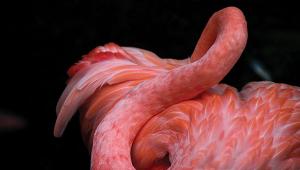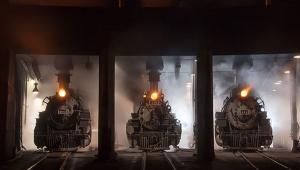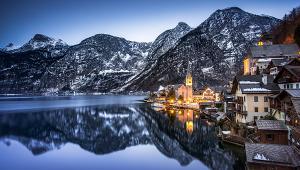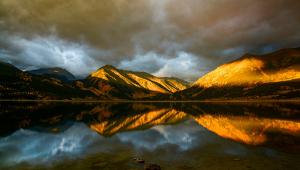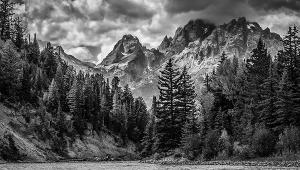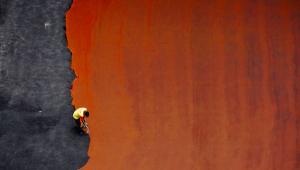Our Favorite Reader Photos from "The Power of B&W" Assignment

“During the summer, water flow can often be lower than usual for spring or fall here in Ohio, and I generally run into far fewer photographers as a result,” Justin Cale says. “I rather like the low flow at times as it adds a slim, precise focal point to the image.” This one was shot with his Canon EOS 6D and Tamron 24-70mm VC lens, with a Lee Big Stopper.
© Justin Cale
Despite all the advancements in imaging—including the advent of color and the now dominance of digital—there’s something about classic black-and-white photography that will never go out of style. That’s not to say that just because a photo has been shot in or converted to monochrome, it’s guaranteed to be a great photo. The choice to go black and white must have some meaningful relationship to the subject matter or scene to be effective. For this assignment, we were looking for your best black-and-white photos that use the dramatic impact of monochrome in a powerful way. Here are our six favorites.

“Sunsets over the Erg Chebbi dunes, Merzouga, Sahara Desert, High Atlas Mountains in southeast Morocco are a spectacular sight,” Tom Carroll writes. “The ever-shifting sands at sunset create a vivid chiaroscuro of shapes and forms.” He captured this shot with a Fujifilm X-T1 and an XF 18-135mm lens at ISO 2500, 1/180 second, f/16, -0.33 EC, 28mm, handheld. The image was then processed with Silver Efex Pro 2.
© Tom Carroll
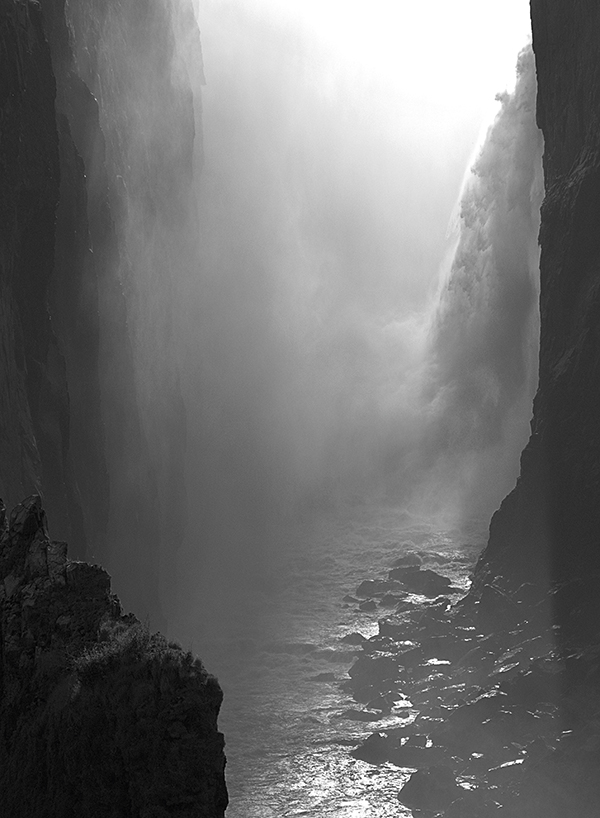
“Victoria Falls is famous for being among the largest waterfalls in the world. However, I visited during the dry time of year when there was also a drought,” Bill Sisson explains. “The greatly decreased water flow made for an almost surreal scene when the setting sun backlit part of the falls. I spent two afternoons photographing the falls and came away with this image.” It was shot with a Pentax K-5 IIs at 1/640 second, ISO 200, f/11, 107mm.
© Bill Sisson

“In its breeding plumage, the Great White Egret preens the delicate ornamental feathers which are borne on the back,” Linn Smith says in describing her striking photo. It was captured with a Canon EOS 5D Mark II at f/13, 1/1250 second, ISO 800.
© Linn Smith
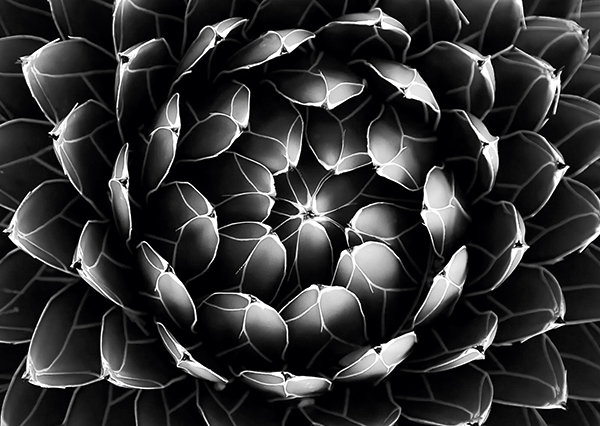
“I saw this amazing textured plant (found out later it’s a Queen Victoria Agave) in one of my neighbor’s yards while out walking with my husband,” Laura Zirino writes. “I didn’t feel comfortable setting up a tripod in the yard of someone I didn’t know, so I grabbed my camera and cranked up the ISO to get this shot in the late evening light.” She used a Canon EOS 5D Mark III and a 24-105mm lens at ISO 1600, f/5.6, 1/80 second.
© Laura Zirino

Bob Bader captured this moody sunrise seen through Karnak Temple in Luxor, Egypt, with a Canon EOS 5DS R and an EF 24-105mm f/4L IS USM lens at f/14, 1/400 second. The image was processed in Adobe CS6 using Nik HDR Efex.
© Bob Bader
Picture This! – Our Next Assignment
Street Photography & Urban Landscapes
Anyone who has walked the streets with a camera (or a smartphone) has witnessed scenes of everyday life that seem too good to pass up for a photograph. But how often do you stop and actually capture them? That’s the trick to great street photography: you’ve got to be ready and you need to have no fear of shooting candid images of people on the street, most times without their permission. But there’s another type of street shooting that can be a little less stressful and that’s urban landscape photography. Just think of your town or city as an urbanized Grand Canyon and look for unique angles and great lighting to capture the architecture and setting. For this assignment, feel free to submit either Henri Cartier-Bresson-type “decisive moments” of people in street scenes or fine art-worthy images of urban landscapes.

I captured this gritty image while walking on Fifth Avenue near the Plaza Hotel in New York City. This is one of the ritziest parts of New York and I would never have seen this extremely dirty traffic light covered with pigeons if I wasn’t using a camera with a long zoom. In fact, it was the Sony HX300 superzoom camera, which has a built-in 50x optical zoom (24-1200mm equivalent). While looking for interesting things to shoot, I spied the light, zoomed in, and snapped an image. Not only was I able to isolate the birds and the light for a close-up composition, the compression the long zoom created isolated the foreground and flattened the background to add drama to the photo. All of which proves that sometimes you need to look up, look down, and look all around to make an interesting photo.
© Dan Havlik
How To Submit Online
1. Go to www.shutterbug.com and register. Scroll down the page and on the right side you will see a box for entering your username and your password. If you have already registered and/or submitted images for the Galleries you can skip this step. Respond to the activation e-mail. Registration is free. You will use your username and password whenever you visit or, with some systems, it will automatically load for you when you visit www.shutterbug.com.
2. Check the assignment and closing dates in the magazine. When the magazine is printed we will create an appropriate gallery for your images. The limit is two images per assignment.
3. Select and prepare your images. We only accept files at a maximum 5MB size, JPEG format. Save the JPEG at a quality level of 10 or higher. Note that file size in your image folder directory will determine upload size, not the “opened” file size, as JPEG compresses at 1:4 at higher quality ratings. If your images do not load it probably means you have exceeded the file size or have not used JPEG format.
4. Click on the Galleries tab on the homepage. In the Category section use the drop-down menu to select the Picture This! assignment. Note that images are simultaneously loaded into the assignment category as well as your own personal gallery. When the Picture This! assignment deadline date has lapsed the assignment gallery will be removed, but your images will still reside in your own gallery.
5. In the Description box add title, camera, lens, exposure information, and your full name. Also add any other comments or anecdotes you think relevant. We reserve the right to edit comments as needed.
6. Click the Save button at the bottom of the page. This uploads the image.
7. You retain copyright on the image.
8. We will choose the images after close of the due date.
9. Please feel free to comment on images submitted by other readers.
Please Note: If the photograph includes a minor or a recognizable individual or group you are guaranteeing that you have a signed model release form, and especially a parental or guardian release form for minors. You should keep a copy of that release in your files. Scan that release and keep it handy. If an image is chosen for publication, failure to provide a form when requested will eliminate the image from consideration. You can find release forms at http://asmp.org/tutorials/model-release-minor-child.html and other resources on the Internet. By uploading images you attest that the model release form is valid, that any depiction of a person is with their consent, that you have a model release form available on request, and that all images you submit have been made by you.
Dates
Deadline for submission: November 1, 2016.
Images will appear in our February 2017 issue.
Our next topic: Red!
Deadline: December 1, 2016
Publication Date: March 2017
Please Note: By submitting you agree to give us the right to show the image(s) on the web and for publication. You give us publication rights in the magazine and on the website(s) of TEN: The Enthusiast Network, LLC.
You can see past Picture This assignment winners here.
If you have any questions or problems e-mail us at editorial@shutterbug.com with Picture This! in the subject line.
- Log in or register to post comments
